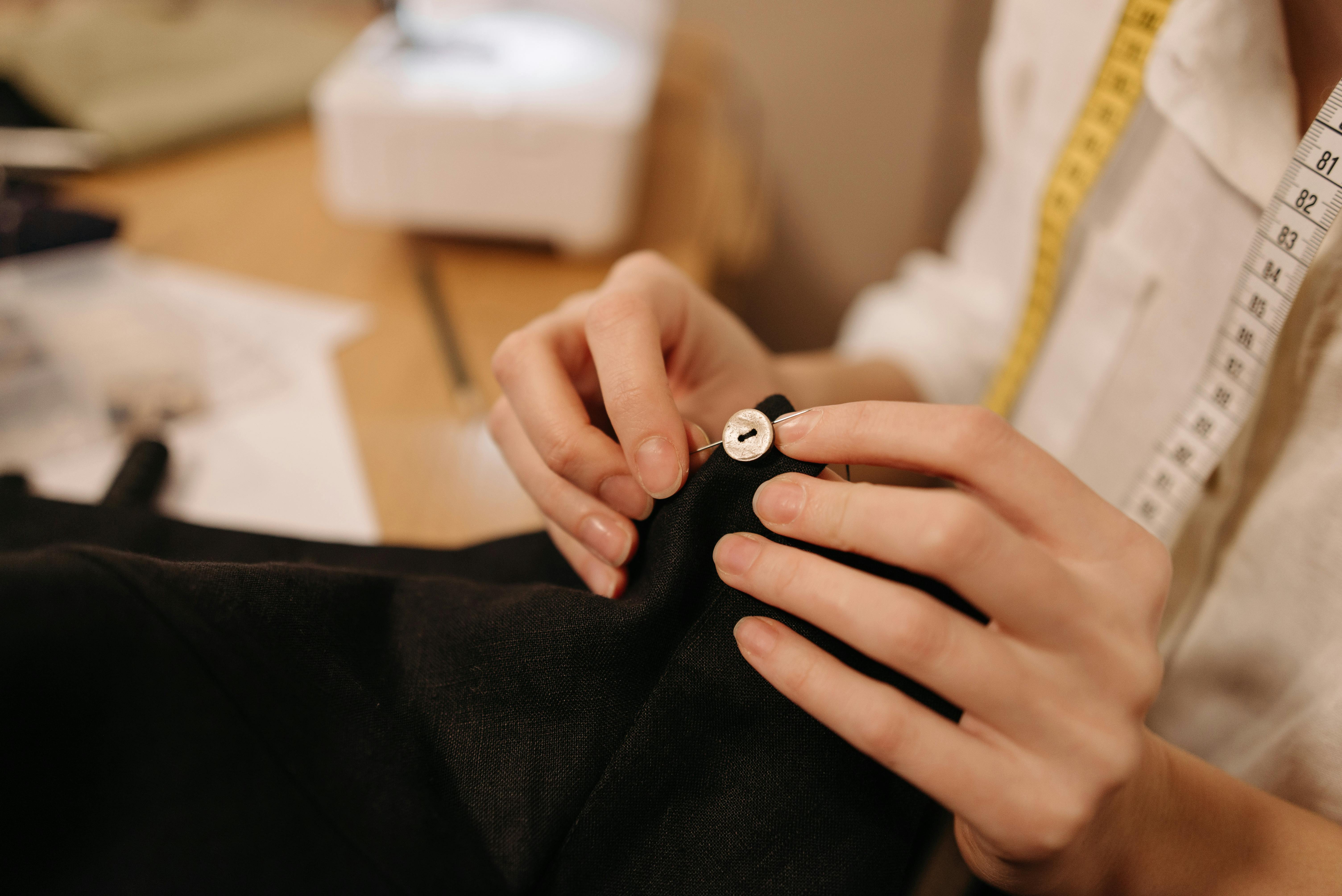Sustainable Fashion: A Guide to Repairing Your Clothes
Posted by Louise Napoletano on Apr 25, 2024
In just a few decades, our connection with clothing has transformed from one of value and longevity to one of disposability and waste. The rise of fast fashion has fuelled a culture of overproduction and overconsumption, leading to staggering amounts of clothing being discarded every year. Trend cycles, once measured in decades, now change in a matter of months, fuelled by micro-trends that rise and fall, amplified by social media that perpetuates a culture of relentless consumption. With the world now consuming about 80 billion new pieces of clothing annually, it's clear that our current approach to fashion is unsustainable.

But amidst this whirlwind of excess, there lies a quiet revolution: the art of mending. Mending is more than just repairing textiles; it's an act of care in a system that thrives on carelessness. By investing time and effort into repairing our clothing, we reclaim a sense of agency over what we wear. We reject the notion that fashion should be disposable and instead embrace the idea of clothing as a lasting investment. Every garment we mend is one less item destined for the landfill, where discarded clothing contributes to pollution and carbon emissions. As more people awaken to the environmental toll of fast fashion, repairing your clothes is key to the slow fashion movement. It's a tangible way for individuals to make a difference, one stitch at a time.
The art of mending clothing has fallen out of favour in recent years, with mass-produced clothing becoming so readily available as to deem repairs more trouble than they're worth. However, we are fortunate that an abundance of resources to re-learn these skills lay at our fingertips, with the internet making it easier and more accessible than ever.
While it may be daunting, repairing clothes doesn't require advanced sewing skills or expensive equipment. Here are some common repair methods to get you started:
- Sewing: From loose hems to missing buttons, basic sewing skills are invaluable when it comes to repairing clothes. Invest in a quality sewing kit that includes needles, thread in various colours, scissors, and pins. With these tools on hand, you can tackle a wide range of repairs, from minor adjustments to more complex alterations.
- Patchwork and embroidery: Instead of hiding holes and tears, embrace them as opportunities for creative expression through patchwork or embroidery. Patching adds visual interest to your clothes while reinforcing weak spots.
- Darning: Darning is a technique used to repair holes and thinning areas in fabric, particularly knitwear like socks and sweaters. By weaving new threads over damaged areas, you can strengthen the fabric and prevent further unravelling.
- Reinforcement: In addition to repairing existing damage, reinforce high-stress areas of your clothes to prevent future wear and tear. This might involve adding extra stitching to seams or applying patches to areas prone to friction.
There are lots of resources on the internet that provide excellent tutorials on these techniques such as @geri_in_stitches, @seam_ingly, @alexandrabrinck and many more.
For those who prefer to leave it to the experts, check out businesses like Hello Tailr that offer an Australia wide, door to door alteration and repair service or Melbourne based Second Stitch which is a social enterprise offering alterations and workshops in addition to selling beautiful products hand made in their studios.
Repairing your clothes doesn’t only have to be about fixing flaws – it can also be an opportunity to embrace your creativity and create a truly personal style. Upcycling or repurposing old clothes allows you to breathe new life into your wardrobe without opening your wallet. Whether you turn a pair of jeans into shorts or embroider an old jumper, by investing time into customising your garments, you create pieces that are as unique as you are, all while minimising your environmental footprint.
In a world where fast fashion reigns supreme, mending is a radical act of defiance. It's a rejection of mindless consumption and a reclaiming of value in the clothes we wear. So let's pick up our needles, thread our way through the fabric of time, and mend not just our clothes, but our relationship with fashion itself.
Together, we can stitch a more sustainable future—one garment at a time.

